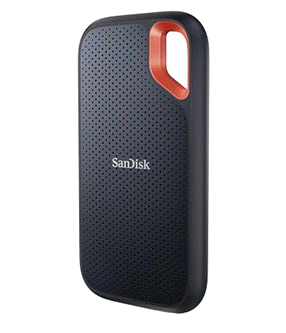Balaji
2025-08-23 12:10:00
gbhackers.com
The digital landscape in 2025 is more complex than ever, with organizations relying on intricate hybrid, cloud, and on-premises networks to power their operations.
Network monitoring tools have become indispensable for IT teams to maintain network health, security, and performance.
These solutions provide real-time visibility into network devices, traffic, and applications, helping administrators proactively identify and resolve issues, prevent downtime, and ensure a seamless user experience.
Choosing the right network monitoring solution is a strategic decision that directly impacts an organization’s operational efficiency.
A top-tier tool should offer a combination of automated discovery, intuitive dashboards, intelligent alerting, and in-depth analytics.
This allows IT teams to quickly pinpoint the root cause of problems, optimize resource allocation, and plan for future capacity needs.
The following list of the best network monitoring tools in 2025 highlights a range of options suitable for various business sizes and technical requirements.
A set of core criteria essential for modern IT environments guided our selection process for the best network monitoring tools.
We focused on solutions that provide comprehensive visibility, actionable insights, and a strong return on investment. The following factors were critical to our evaluation:
- Core Functionality: We prioritized tools with robust capabilities such as real-time performance monitoring, automated device discovery, network mapping, and traffic analysis.
- Scalability & Flexibility: We looked for solutions that can grow with a business, whether that means monitoring a small, on-premises network or a vast, globally distributed hybrid cloud environment. We considered support for multi-vendor devices and a variety of protocols (SNMP, WMI, NetFlow, etc.).
- Alerting & Automation: An effective tool must have an intelligent alerting system with customizable thresholds and escalation protocols to minimize false positives and ensure critical issues are addressed promptly. We also looked for automation features that can streamline routine tasks.
- User Experience (UX): We evaluated the user interface for intuitiveness, ease of navigation, and customizable dashboards that provide a clear, unified view of network health.
- Community & Support: For both commercial and open-source tools, we considered the availability of official support, a strong community, and a rich ecosystem of plugins and integrations.
- Pricing & Value: We considered the pricing models and overall value proposition for different organizational sizes, from small businesses to large enterprises.
| Tool | Cloud-based | On-premise | Automated Discovery | Network Mapping | Real-time Monitoring | AIOps Capabilities | Native Traffic Analysis | Free Tier Available |
| SolarWinds NPM | ❌ No | ✅ Yes | ✅ Yes | ✅ Yes | ✅ Yes | ✅ Yes | ✅ Yes | ❌ No |
| PRTG | ✅ Yes | ✅ Yes | ✅ Yes | ✅ Yes | ✅ Yes | ❌ No | ✅ Yes | ✅ Yes |
| OpManager | ❌ No | ✅ Yes | ✅ Yes | ✅ Yes | ✅ Yes | ✅ Yes | ✅ Yes | ✅ Yes |
| Nagios XI | ❌ No | ✅ Yes | ✅ Yes | ✅ Yes | ✅ Yes | ❌ No | ❌ No | ❌ No |
| Zabbix | ❌ No | ✅ Yes | ✅ Yes | ✅ Yes | ✅ Yes | ✅ Yes | ✅ Yes | ✅ Yes |
| Datadog | ✅ Yes | ✅ Yes | ✅ Yes | ✅ Yes | ✅ Yes | ✅ Yes | ✅ Yes | ❌ No |
| LogicMonitor | ✅ Yes | ❌ No | ✅ Yes | ✅ Yes | ✅ Yes | ✅ Yes | ❌ No | ❌ No |
| Site24x7 | ✅ Yes | ✅ Yes | ✅ Yes | ✅ Yes | ✅ Yes | ✅ Yes | ✅ Yes | ✅ Yes |
| Auvik | ✅ Yes | ❌ No | ✅ Yes | ✅ Yes | ✅ Yes | ✅ Yes | ✅ Yes | ❌ No |
| Netreo | ✅ Yes | ✅ Yes | ✅ Yes | ✅ Yes | ✅ Yes | ✅ Yes | ✅ Yes | ❌ No |
1. SolarWinds Network Performance Monitor (NPM)

Specifications:
SolarWinds NPM is a powerful, enterprise-grade network monitoring tool. It is known for its deep visibility and comprehensive feature set, including the patented NetPath feature for hop-by-hop path analysis.
It offers both on-premises and hybrid cloud monitoring capabilities and is scalable for large and complex IT environments.
Reason to Buy:
SolarWinds NPM is a go-to solution for IT professionals who require an all-in-one platform with extensive features for troubleshooting and performance analysis.
Its NetPath and PerfStack features provide granular insights into network paths and performance metrics, making it ideal for large, complex networks.
Features:
Intelligent alerting and reporting; Automated network discovery and mapping; Deep packet inspection and analysis; Scalable for large enterprise networks; Hybrid cloud and on-premises monitoring;
Pros:
Highly scalable and comprehensive feature set; Granular troubleshooting with NetPath; Excellent customizable dashboards and reports; Strong support for multi-vendor environments;
Cons:
Can be complex to set up and manage initially; High cost for smaller businesses; On-premise deployment requires dedicated infrastructure; The vast number of features can be overwhelming for new users;
✅ Best For: Large enterprises and IT teams with complex, multi-vendor, and hybrid networks.
Official Website: SolarWinds Network Performance Monitor (NPM)
2. PRTG Network Monitor

Specifications:
PRTG Network Monitor is a flexible, all-in-one monitoring solution that uses a “sensor-based” licensing model, making it highly customizable.
It can monitor almost anything with an IP address, from network devices and servers to applications and cloud services. It is available as both an on-premises and a cloud solution.
Reason to Buy:
PRTG’s unique sensor-based pricing makes it a highly cost-effective and scalable choice. You only pay for what you monitor.
It is suitable for organizations of all sizes, from SMBs to large enterprises, and provides a wide array of pre-configured sensors for quick setup.
Features:
Flexible sensor-based licensing; Extensive monitoring capabilities (network, server, app, cloud);Customizable dashboards and maps; Multiple alerting methods (email, SMS, push notifications); Support for various protocols (SNMP, WMI, NetFlow, etc.);
Pros:
Very flexible and scalable with sensor-based pricing; Offers a comprehensive free version for up to 100 sensors; Easy to set up and get started with auto-discovery; All-in-one solution for unified monitoring;
Cons:
The user interface can feel a bit dated; Managing a large number of sensors can be complex; Requires some learning to get the most out of it; On-premise setup requires a Windows server;
✅ Best For: Businesses of all sizes looking for a flexible, all-in-one, and scalable monitoring solution.
Official Website: PRTG Network Monitor
3. ManageEngine OpManager

Specifications:
ManageEngine OpManager is a user-friendly and feature-rich network monitoring tool designed for IT administrators.
It provides robust fault and performance management, network mapping, and detailed reports. The solution is praised for its quick setup and affordable pricing, particularly for its comprehensive feature set.
Reason to Buy:
For organizations seeking a powerful and budget-friendly solution that doesn’t compromise on features, OpManager is an excellent choice.
It’s particularly well-regarded for its network mapping capabilities and support for hybrid networks, including virtualized environments.
Features:
Real-time fault and performance monitoring; Layer 2 network mapping and business views; VoIP and WAN performance monitoring; Firewall log analysis and configuration management; Advanced alerting with multi-level thresholds;
Pros:
Very feature-rich and affordable; Intuitive user interface with a shallow learning curve; Strong support for multi-vendor devices; Excellent for visualizing complex networks with Layer 2 maps;
Cons:
Some users report issues with the web UI; Customizing reports can be a bit challenging; Can require a lot of system resources for large environments; The mobile app’s functionality could be improved;
✅ Best For: IT administrators and network engineers in SMBs and large organizations who need a cost-effective, full-featured monitoring tool.
Official Website: ManageEngine OpManager
4. Nagios XI

Specifications:
Built on the powerful Nagios Core 4 monitoring engine, Nagios XI is a highly customizable and scalable network monitoring solution.
It provides a web-based GUI for ease of use while maintaining the flexibility of its open-source backend. It excels in providing visibility into the entire IT infrastructure.
Reason to Buy:
Nagios XI is the professional-grade version of the open-source Nagios Core, offering an intuitive UI and advanced features like capacity planning, advanced reporting, and configuration wizards.
It’s the ideal choice for organizations that value the power of open-source but need a more user-friendly, supported, and feature-rich experience.
Features:
Powerful Nagios Core monitoring engine; Customizable web GUI and dashboards; Advanced alerting and notification system; Configuration wizards for easy setup; Capacity planning and historical reporting;
Pros:
Highly customizable with thousands of community plugins; Robust and powerful monitoring capabilities; Excellent for Linux-based environments; Strong reporting and capacity planning features;
Cons:
Can have a steep learning curve for new users; Requires strong technical skills for advanced configuration; No native cloud-based offering; Pricing can be high for the enterprise version;
✅ Best For: DevOps teams, Linux administrators, and IT organizations that need a highly customizable and scalable solution with a strong community.
Official Website: Nagios XI
5. Zabbix

Specifications:
Zabbix is a free and open-source enterprise-class network monitoring solution. It is highly scalable and can monitor millions of metrics from thousands of devices.
Zabbix is known for its robust features, including distributed monitoring, trend prediction, and a powerful web interface. It is a highly popular choice for organizations with a DIY mindset.
Reason to Buy:
Zabbix is the ultimate choice for organizations looking for a powerful, no-cost network monitoring solution.
Its open-source nature means no licensing fees, and its robust feature set rivals many commercial tools. It is highly scalable and offers deep customization for those with the technical expertise.
Features:
Agent and agentless monitoring; Extensive monitoring capabilities; High-level visualization and mapping; Trend prediction and forecasting; Highly scalable for large, distributed networks;
Pros:
Completely free and open-source with no licensing costs; Extremely scalable and flexible for any environment; Powerful monitoring and alerting features; Strong community support and extensive documentation;
Cons:
Requires a significant amount of time and technical expertise for setup; The initial learning curve can be steep; The official commercial support is an additional cost; Reports and dashboards can be less polished than commercial tools;
✅ Best For: Budget-conscious organizations, IT teams with strong technical skills, and businesses that need a highly flexible and customizable open-source solution.
Official Website: Zabbix
6. Datadog Network Monitoring

Specifications:
Datadog is a cloud-native monitoring platform that offers a comprehensive suite of tools, including a dedicated Network Performance Monitoring (NPM) module.
It provides real-time visibility into network traffic flow and performance across on-premises, hybrid, and cloud environments. Datadog’s strength lies in its ability to unify metrics, logs, and traces.
Reason to Buy:
Datadog is the ideal solution for modern, cloud-native IT and DevOps teams. It provides a unified observability platform that correlates network performance data with application, server, and log data.
This provides a holistic view of the IT stack, accelerating root cause analysis and collaboration.
Features:
Unified observability platform; Real-time network flow analysis; Automatic network topology mapping; Seamless integration with cloud services; Advanced alerting and anomaly detection;
Pros & Cons:
Provides a unified view of the entire IT stack; Excellent for modern, cloud-native environments; Intuitive and modern user interface; Strong collaboration and troubleshooting features;
Cons:
Pricing can become expensive as usage grows; The feature set is vast and can be overwhelming; Requires a multi-module subscription for full benefits; Less focused on traditional, on-premise-only networks;
✅ Best For: DevOps teams, cloud-native organizations, and companies that need a unified observability platform for their entire IT environment.
Official Website: Datadog Network Monitoring
7. LogicMonitor

Specifications:
LogicMonitor is an AI-driven, SaaS-based monitoring platform designed for hybrid IT environments. It automatically discovers and monitors devices and provides actionable insights and intelligent alerts.
Its AIOps features help reduce alert fatigue by correlating events and predicting issues before they impact performance.
Reason to Buy:
LogicMonitor is a top-tier choice for MSPs and enterprises managing complex hybrid cloud infrastructures.
Its AI-driven approach to alerting and troubleshooting helps IT teams work more efficiently and proactively. The automated device discovery and mapping save significant time and effort.
Features:
AI-driven insights and automation; Automated device discovery and mapping; Unified monitoring for hybrid environments; Intelligent alerting with dynamic thresholds; Extensive dashboarding and reporting;
Pros:
Excellent AIOps features to reduce alert noise; Fully automated setup and maintenance; Unified visibility across hybrid and multi-cloud; Strong support and customer service;
Cons:
Pricing can be complex and expensive; No on-premise option for monitoring; Can be overkill for small businesses; The configuration of some metrics can be complex;
✅ Best For: Managed Service Providers (MSPs) and enterprises with complex, hybrid, or multi-cloud IT environments.
Official Website: LogicMonitor
8. Site24x7 Network Monitoring

Specifications:
Site24x7 is a cloud-based, all-in-one monitoring solution that offers comprehensive network monitoring as part of its platform. It’s particularly strong in monitoring network devices, traffic, and firewalls.
Its cloud-native design makes it an ideal solution for monitoring remote offices and hybrid networks without the need for on-premise infrastructure.
Reason to Buy:
Site24x7 offers an excellent value proposition as a unified platform for monitoring network, server, application, and user experience.
Its cloud-based nature and ability to monitor remote locations make it a great choice for distributed organizations. The user-friendly interface and a free tier make it accessible for many businesses.
Features:
Unified monitoring platform; Network traffic and configuration management; VoIP and WAN performance monitoring; IP address management (IPAM); Cloud-native monitoring for remote locations;
Pros:
All-in-one unified monitoring platform; Cloud-based and easy to deploy; Excellent for monitoring remote and distributed networks; User-friendly interface with customizable dashboards;
Cons:
The free tier is limited and paid plans are per-device; Can feel less focused on deep network analysis compared to dedicated tools; Some advanced features require additional modules; The pricing structure can be confusing;
✅ Best For: SMBs and distributed organizations that need a unified, cloud-based monitoring solution for their entire IT stack.
Official Website: Site24x7 Network Monitoring
9. Auvik

Specifications:
Auvik is a cloud-based network management and monitoring solution designed to simplify the complexities of modern networks.
It is known for its effortless setup, automated network mapping, and real-time device discovery. Auvik provides a comprehensive inventory and configuration management, which is a major time-saver for IT teams.
Reason to Buy:
Auvik is the perfect choice for organizations and MSPs that want to simplify network management. Its automated features, particularly network mapping and documentation, save countless hours of manual work.
It provides immediate, deep visibility into network devices and their relationships, which is a significant advantage for troubleshooting.
Features:
Automatic network discovery and mapping; Real-time inventory and configuration management; Traffic analysis and performance monitoring; Secure remote access to devices; Centralized management for multiple sites;
Pros:
Extremely easy to set up and use; Automated network mapping is a huge time saver; Provides a wealth of information in one place; Great for managing multiple sites and client networks;
Cons:
The pricing can be on the higher side; Does not offer an on-premise version; Less customizable than open-source alternatives; Some users report a high learning curve for some features;
✅ Best For: MSPs and organizations with multiple sites who need a simple, powerful, and automated network management solution.
Official Website: Auvik
10. Netreo

Specifications:
Netreo is a full-stack observability platform that includes robust network monitoring capabilities. It provides a comprehensive view of the IT infrastructure, from devices and applications to cloud services.
Netreo’s strengths lie in its AIOps features, which help automate IT processes and provide predictive insights, and its ability to monitor diverse, multi-vendor environments.
Reason to Buy:
Netreo is a strong contender for organizations that need a proactive, AI-driven solution to manage complex and dynamic IT environments.
It combines network monitoring with application and infrastructure monitoring, providing a holistic view that helps predict and prevent issues before they impact the business.
Features:
AIOps-driven performance and fault management; Full-stack observability (network, app, infrastructure); Automated discovery and network mapping; Predictive analytics and intelligent alerting; Comprehensive reporting and compliance;
Pros:
Strong AIOps and automation capabilities; Provides a unified, full-stack view; Robust reporting and analytics; Scalable for enterprise-level deployments;
Cons:
Pricing can be a barrier for smaller businesses; The user interface can be a bit complex; Less brand recognition than some competitors; The setup process can be time-consuming;
✅ Best For: Large enterprises and IT teams that want to transition to a more proactive, AI-driven IT operations model.
Official Website: Netreo
Keep your files stored safely and securely with the SanDisk 2TB Extreme Portable SSD. With over 69,505 ratings and an impressive 4.6 out of 5 stars, this product has been purchased over 8K+ times in the past month. At only $129.99, this Amazon’s Choice product is a must-have for secure file storage.
Help keep private content private with the included password protection featuring 256-bit AES hardware encryption. Order now for just $129.99 on Amazon!
Help Power Techcratic’s Future – Scan To Support
If Techcratic’s content and insights have helped you, consider giving back by supporting the platform with crypto. Every contribution makes a difference, whether it’s for high-quality content, server maintenance, or future updates. Techcratic is constantly evolving, and your support helps drive that progress.
As a solo operator who wears all the hats, creating content, managing the tech, and running the site, your support allows me to stay focused on delivering valuable resources. Your support keeps everything running smoothly and enables me to continue creating the content you love. I’m deeply grateful for your support, it truly means the world to me! Thank you!
|
BITCOIN
bc1qlszw7elx2qahjwvaryh0tkgg8y68enw30gpvge Scan the QR code with your crypto wallet app |
|
DOGECOIN
D64GwvvYQxFXYyan3oQCrmWfidf6T3JpBA Scan the QR code with your crypto wallet app |
|
ETHEREUM
0xe9BC980DF3d985730dA827996B43E4A62CCBAA7a Scan the QR code with your crypto wallet app |
Please read the Privacy and Security Disclaimer on how Techcratic handles your support.
Disclaimer: As an Amazon Associate, Techcratic may earn from qualifying purchases.


















































































![Werewolf Bitches from Outer Space [DVD]](https://techcratic.com/wp-content/uploads/2025/08/61upPkjjMfL._SL1000_-360x180.jpg)






















